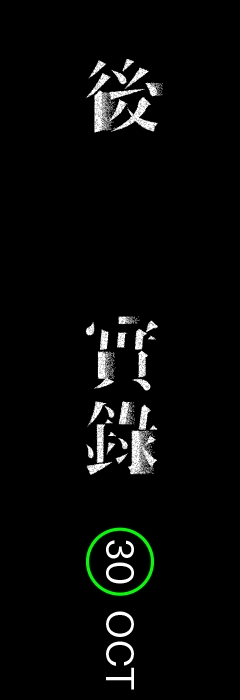







At first, I just wanted to talk about secrets. Who among us doesn't have secrets? In this world, everyone has a lot to talk about. If you have no one to talk to, you may well be suffocated by boredom. Then, let ‘s do some storytelling.
What connects people better than sharing stories? At the beginning, there are three stories. The main characters are Tsui Kam Man, Kwok Wah Sang and So Mei Kam, who travel between Hong Kong and Taiwan, and struggle to survive in the city, just like you and me. Their lives inspired five creative practitioners, Joe Fang and Chung Lun Wu from Taiwan; Edward Chiu, Jason Lam and Jean Tsoi Wai-Yin from Hong Kong. Each of them uses different media to elaborate on the details of these narratives. Audiences are immersed in this story-world, engaging freely with the digital platforms and the physical exhibition, looking for themselves while pondering on the proposition of life and death. What is our raison d'etre? If you believe that the four walls block your way, you may realize that these walls are amorphous after the visiting experience. Walls could be a sandcastle that falls at the touch of a blow, but they could also be bulletproof. The four walls indeed cannot deter you at all. Humans are good at building windows--one here, another there, and all lead to the world. The fourth one is the story of the female writer,Song Dan Jing. Her tale, covering the first three stories and the interpretation by creative practitioners, also determines the exhibition format. From text to the three-dimensional world, let us travel beyond the boundaries of life and death, let us be with you.
Here are a few tips for you, take these as hints if you like:
P.S. Where does one's torment come from? I keep thinking about that. Through cross-disciplinary collaboration, we connect you with the story plots. You may find a connection between the lines, or be struck by personal memories and sorrows listening to the melodies; you may accidentally look into the mirror without recognizing yourself, or be seen as a character in a play when you try to focus on reading. These are the puzzles to be filled by the visitors. The scene and the room will not be completed until someone walks in and goes through every corner of it. Have a nice trip.
Tschüss.
一開始不過是想談談秘密,我們誰沒有。在這個世道,肚子裡藏著一大堆有的沒的,如果沒渠道暢通一下,很快就會悶死,所以我們來說故事。
有什麼比說說故事更能連結眾人?一開始有三個故事,故事主角是崔錦文、郭華生以及蘇美金,他們來往港台,在城市中努力生存掙扎,就像你和我。他們的生活啓發了五個創作人,台灣的方序中、吳仲倫以及香港的趙浩權、林志輝和蔡慧妍,他們各自用不同的創作媒體把故事細節無限延伸,於是在網路平台以至現場實體展,觀眾可以遊走在故事中,在當中找尋自身,也同時思考生死命題。我們活著為了什麼?如果你覺得四堵牆擋了你的好事,你或許在經歷後發現這四堵牆其實可以變化萬千,它可以是沙堡壘一碰就倒,但它都可以堅固得炮彈不入,老實說其實四堵牆擋不了你什麼。人類的雙手最會造窗,這裡一扇那裡一扇,無不通往世界;第四個故事是屬於女作家的,她的故事包裹著其餘三個故事以及所有創作人的延伸蛛絲,也是最後展場的空間佈展,從文字平面走到三維世界,我們無敵死生穿越維度,願與你同在。
這裡有幾道錦囊,喜歡的就當訣竅拿著看:
註:一個人所受的折磨是來自哪裡?筆者一直在思考。透過跨界合作,我們把故事裡的情節與閣下連結在一起;也許你會在文本中找到共鳴、也許你在聽某段音樂時勾起自身的回憶與難過、也許你不小心照到鏡子卻又不認得自己、也許在你想要專心閲讀時卻被他者當作劇中人來觀看。這些都是由觀者去成就的,這個場景這個房間不會是完整的,直至有人走進來經驗每個角落。謝謝您。
Tschüss。